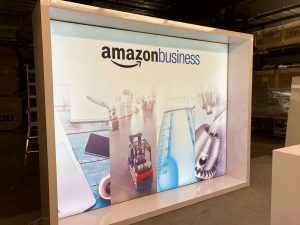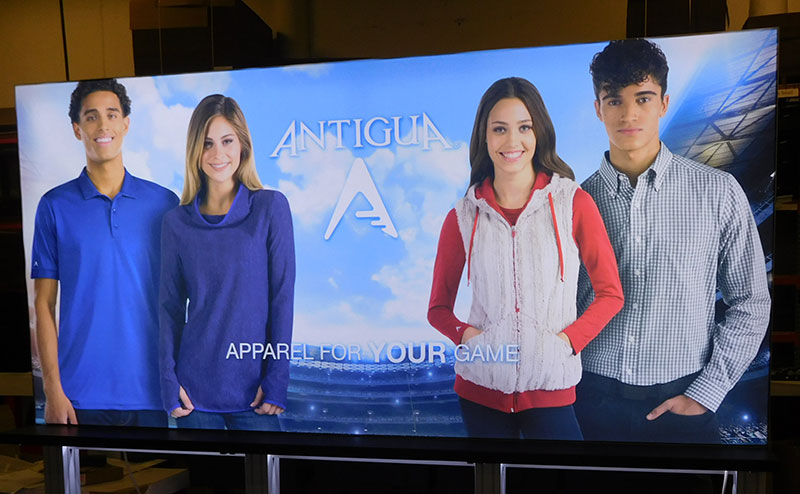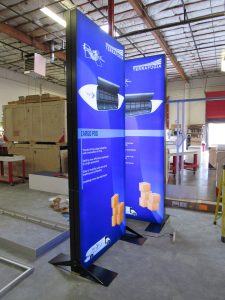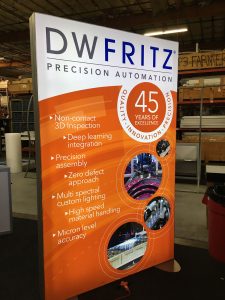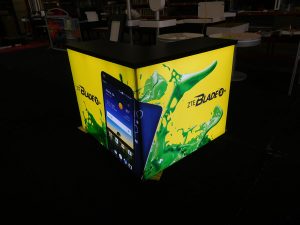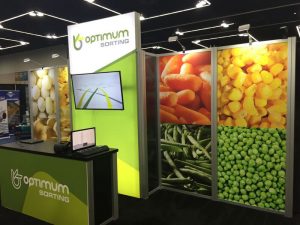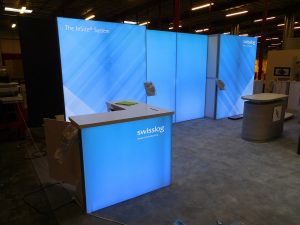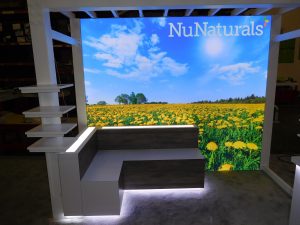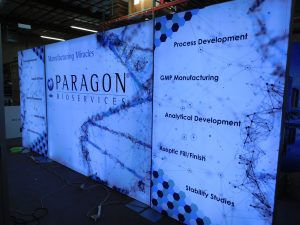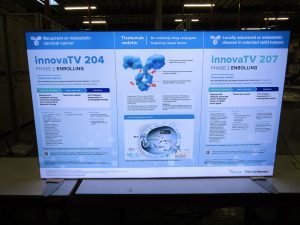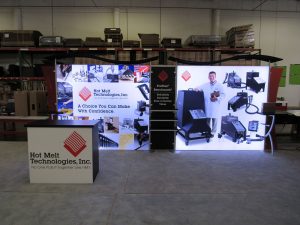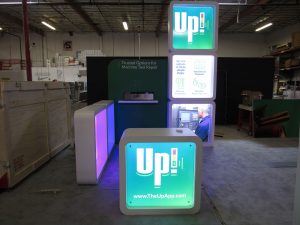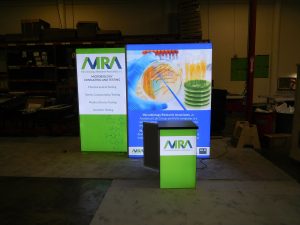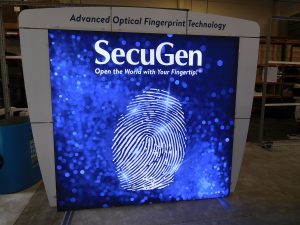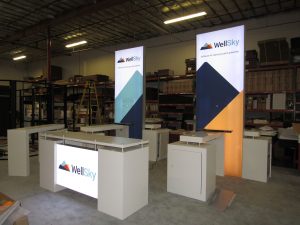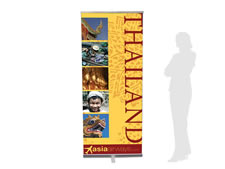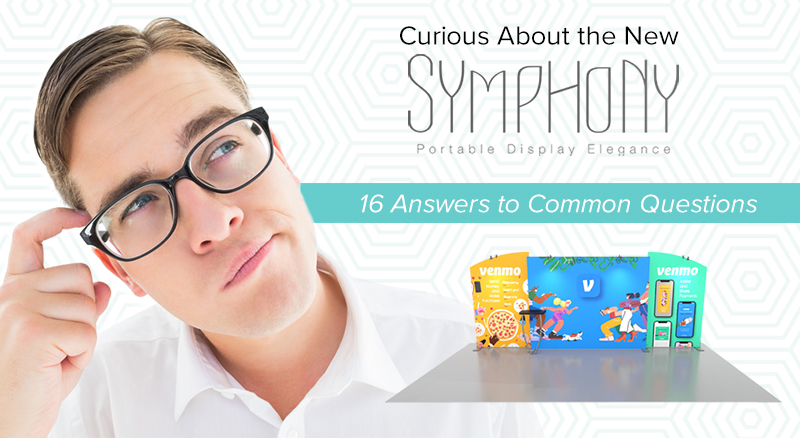
With the uptick in business, you may be answering lots of questions about the new Symphony Portable Display. We’re answering a bunch of them too as exhibitors dip their toes back into the trade show display market.
This Symphony video, which is included with all the kits in EDS, addresses the most common questions, like assembly, graphics, accessories, and counter options. But not all. Below are some recent questions you’ve asked us. Feel free to call or email us on anything else.
Q1. Why are the floating graphics limited to 23″ x 23″ overall dimension?
It’s both a suggestion and a guideline. For example, a floating graphic on the left or right side would intrude into the adjacent booth if it was much larger than 23” . However, since the graphic attaches with hook and loop, there’s wiggle room to make it larger simply by adjusting it. If you decided to attach the floating graphic bracket to the top of the frame, then the dimension could be larger, like a typical header.
Q2. Do the wall sections connect or are they freestanding sitting next to each other?
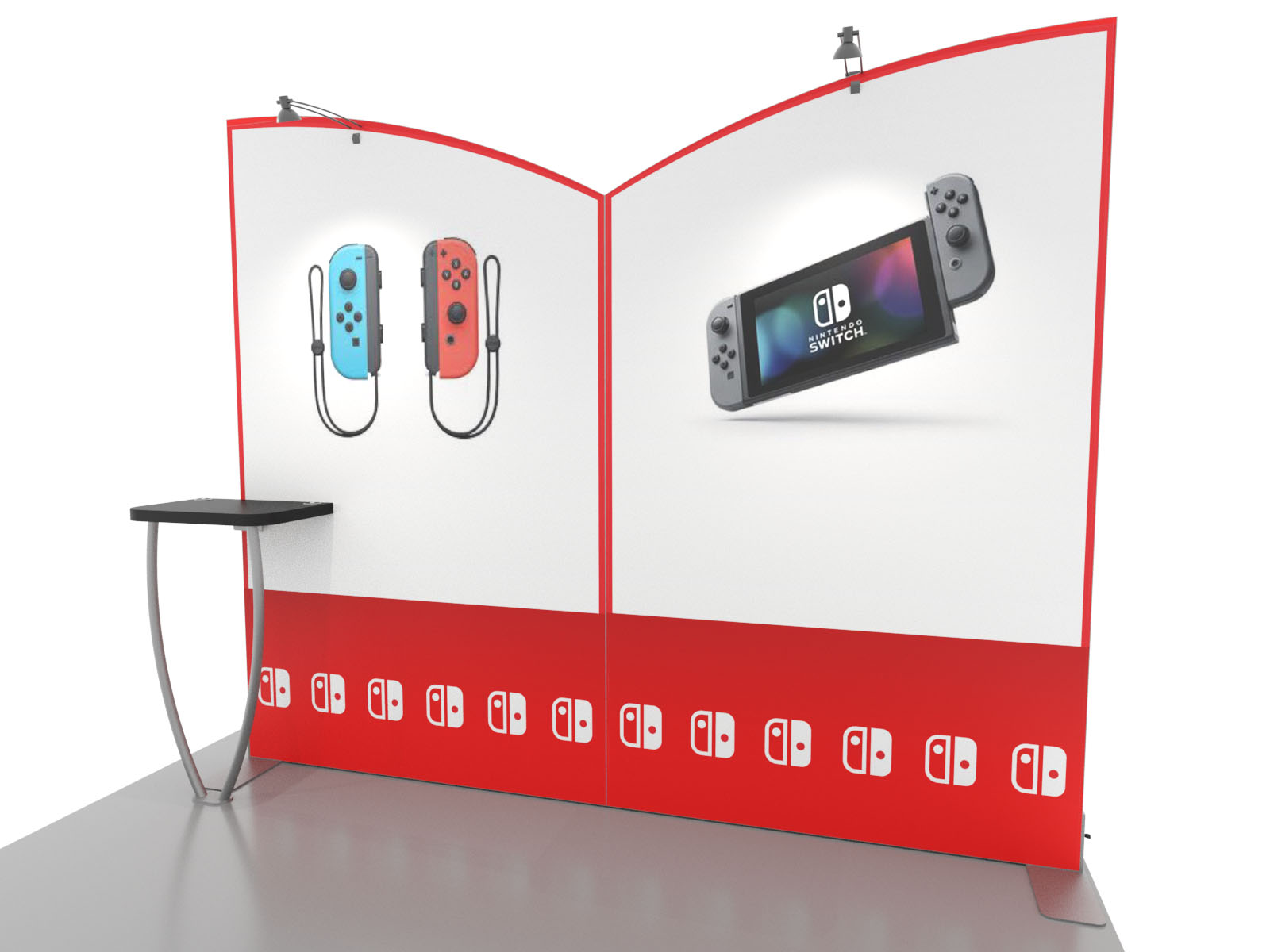
It depends on your design. The SYK-1020 has two half-arch frames next to one another. Those are attached using a frame connection clamp. The SYK-1022 on the other hand uses the same two frames but in the design they are layer, with one slightly in front of the other. In that case, there’s a third base plate in the middle (SYM-107).
Q3. What is the size limitation for monitors?
We recommend no larger than a 23” monitor on the left and right sides. Mostly because they would intrude into the adjacent booth. See SYK-1014 for example. You can have up to a 32” monitor where there’s vertical upright in the middle, such as SYK-1015. On the larger frames, like the arch, rectangle, and concave/convex, we suggest no more than a 42” or 45” monitor.
Could you go larger in some situations? Yes, it all depends on the weight of the monitor, the backwall workstation counters, and the size of the booth space.
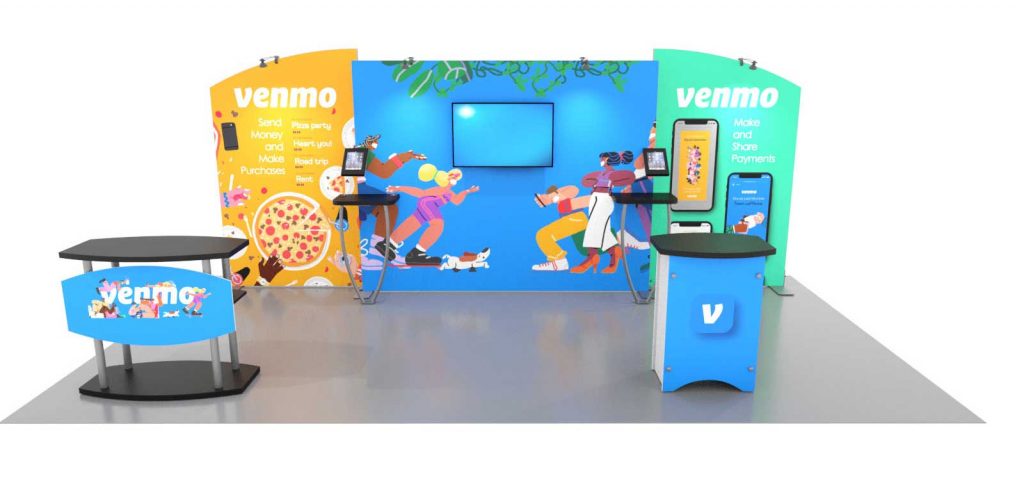
Q4. For a double-sided configuration, can you have monitors in the center on both sides?
Yes, but one monitor would have to be slightly higher (or lower) than the other one. Or there would need to be hardware that allowed both monitor mounts to use the same holes in the vertical support.
Q5. Is there an easy solution to add LED strip accent lighting on the back of a frame to throw light onto one set back… light the right side of the exhibit for example?
Adding flexible LED tape light to the back of the extrusion is possible. We’ve done something similar on other narrow SEG frames. It creates a three to four-inch backlit halo. However, it’s not a standard option for Symphony.
Q6. Are there other surface color/appearance options for the lockable counter, other than the light color shown?
Yes, there are hundreds of laminate options from Nevamar, Formica. Wilsonart, and Pionite. Lead times may vary depending on laminate availability. Plus, you can (and probably should) add vinyl graphics.
Q7. Can the exposed metal be powder coated?
Yes. There would be an upcharge depending on the size of the kit and components.
Q8. Can you expand these kits to include backlit items but still portable?

We have quite a few portable LED backlit designs in Exhibit Design Search, like the VK-1960. Those designs use a deeper aluminum extrusion than Symphony. At present, Symphony is not intended to be a backlit portable system.
However, we’ve built exhibits where SuperNova LED Lightboxes are combined with Symphony frames. For example, using a standard arch or rectangle Symphony frame in the middle with the workstation counters, monitor mounts, and literature trays, and then SuperNova lightboxes on either side.
Q9. To mix standard frame combinations not shown on EDS, do we submit a design request or are there some guidelines for making other combinations?
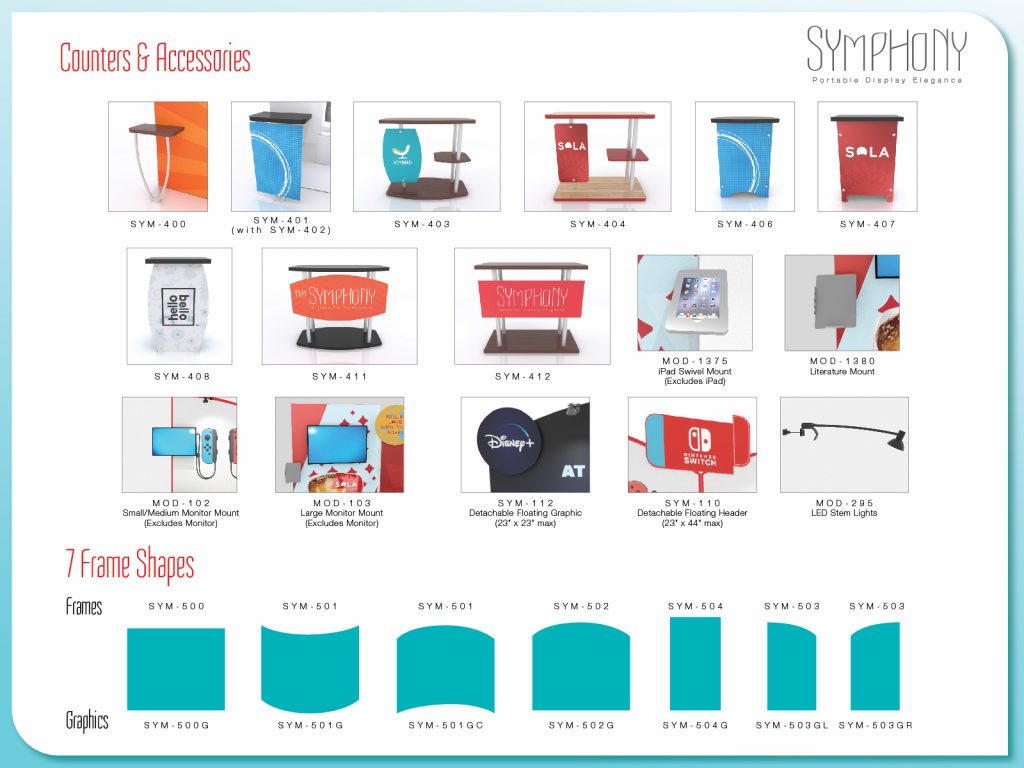
You don’t need to submit a design request. But you can. There are seven frame shapes. Four are roughly 10 ft. and three are roughly 5 ft. You simply need to mix and match the frame sizes to the overall size of the booth. So, two 10 ft. frames for a 20 ft. booth or one 10 ft. frame and two 5 ft. frames. Or four 5 ft. frames? When it comes to Symphony, tap into your inner designer.
Q10. Will the backwall stand with monitors but without workstation counters?
Absolutely but you’ll want to use the smaller sizes mentioned above. The SEG engineered extrusion frame and locking base plate connections means it can support monitors with or without the workstation counter(s).
Q11. On the layering of frames do you use the same foot for both or does each frame have a foot of its own?
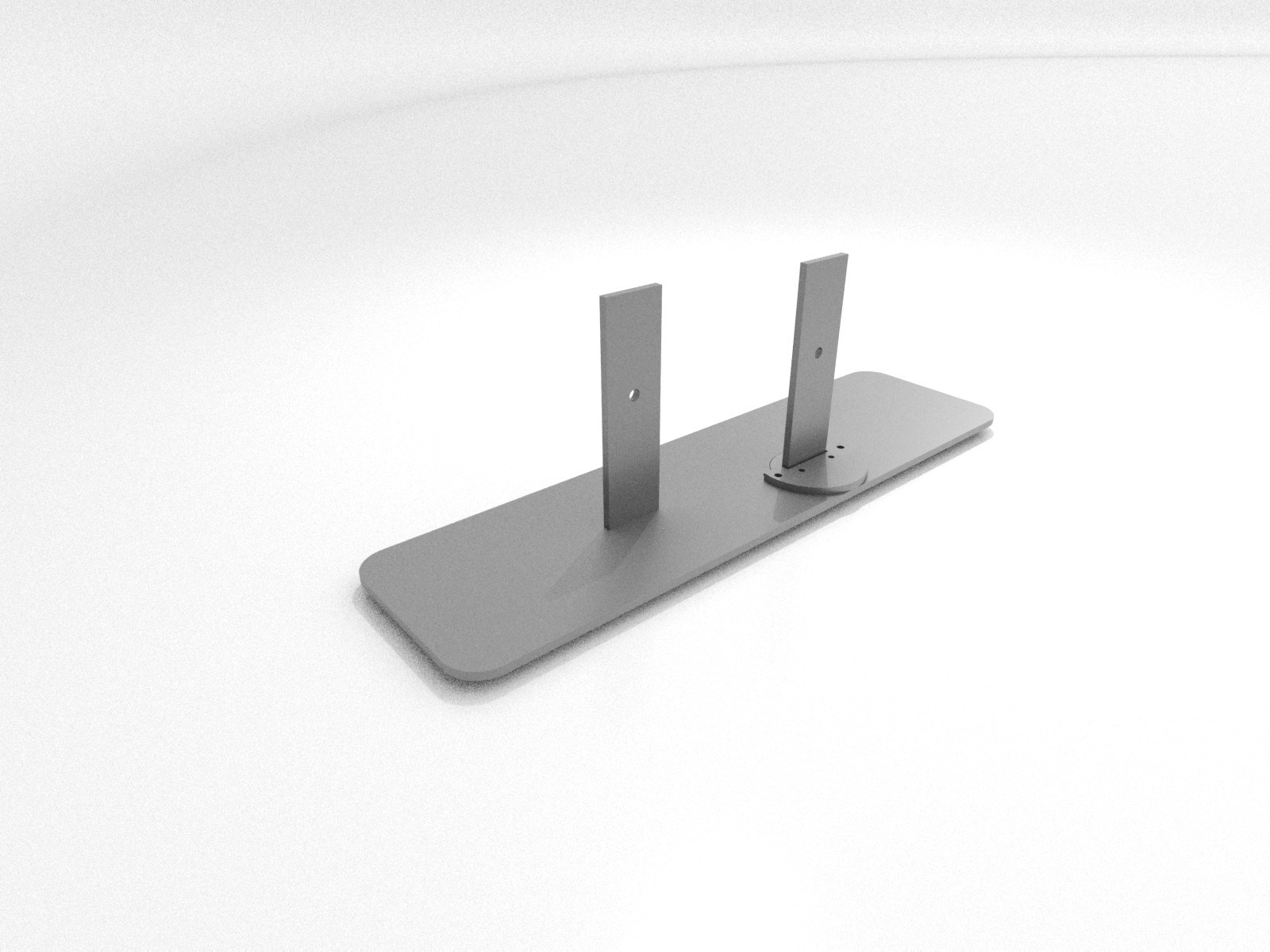
There are two base plates. One with a single frame connection and one with a double frame connection. The single base plates are typically used on the far left and right, and the double base plate is used in the middle to connect two frames.
Q12. Can you guys add a small step stool to each unit?
We could but we won’t. 😉 There are collapsible step stools online for less than $15. And there’s always the option of installing the SEG graphic with the frame flat on the floor.
Q13. Can the open table be used as a charging table?
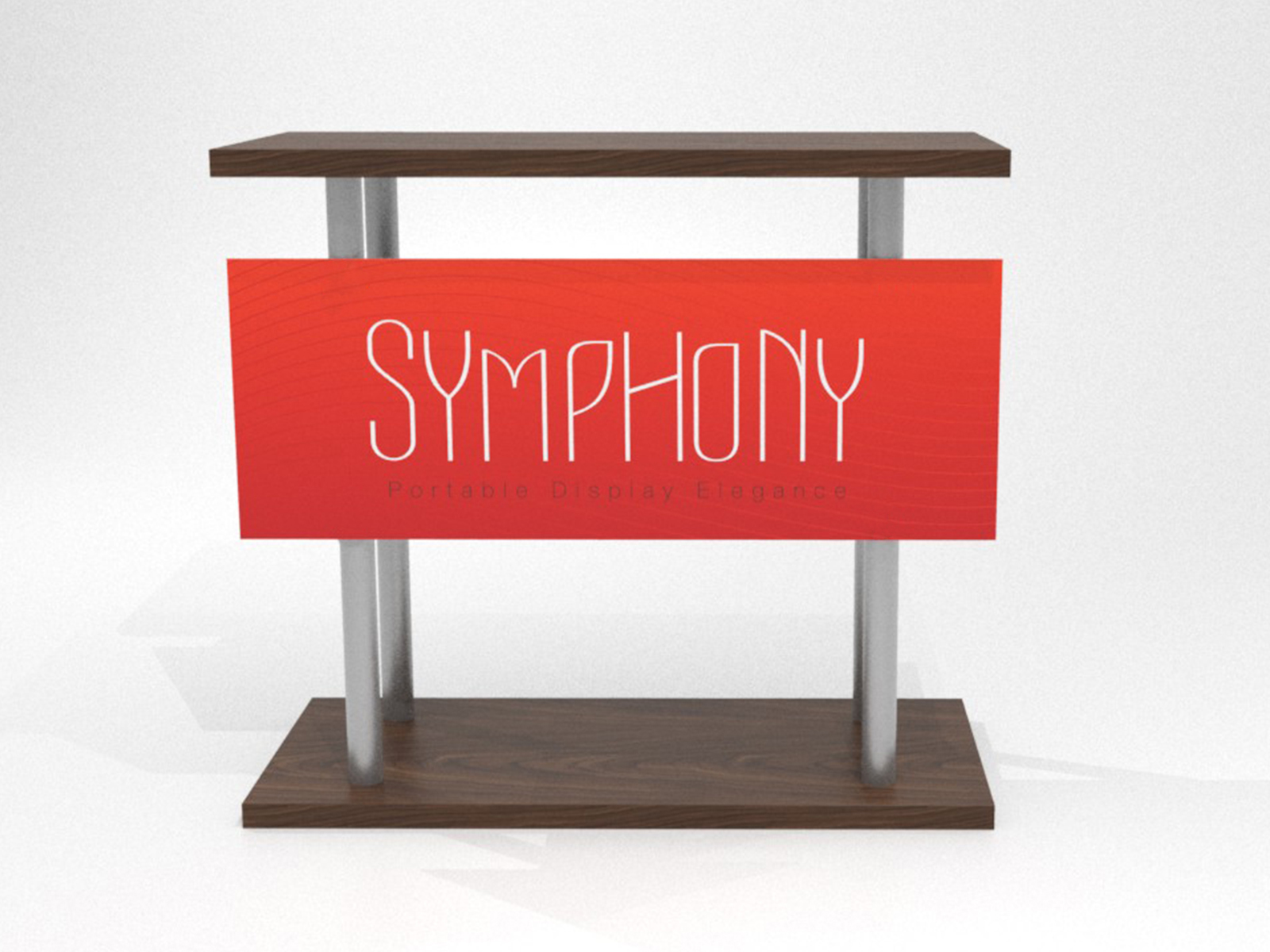
Not really. Even if you had a full graphic, the wire management would still be visible on the back. We suggest selecting the enclosed counters instead or use the two wireless/wired charging pads on the backwall workstation.
Q14. When using the display double-sided, can you still install a monitor mount?
Yes using the hidden vertical support. Whenever you use that monitor attachment, the graphic has to be pierced for the cords.
Q15. What is vertical load capacity of these attachments?
The attachment brackets are welded aluminum and engineered extrusion. If you manage to break an attachment based on weight alone, then we want to hear about it. Frankly, it’s not going to happen.
Q16. Are the shipping cases portable?
Symphony ships in our portable flat roto-molded cases with wheels and includes Classic’s reusable die-cut foam packaging. No exhibit builder does a better job with packaging, labeling, and instructions than Classic.
–Mel White
mel@classicexhibits.com
http://www.linkedin.com/in/melmwhite
**********************************************
Classic Exhibits Inc. designs and manufacturers portable, modular, hybrid, and custom exhibit solutions, including Symphony Portable Displays. Classic Exhibits products are represented by an extensive distributor network in North America and in select International markets. For more information, contact us at 866-652-2100 or www.classicexhibits.com.





